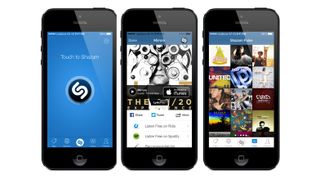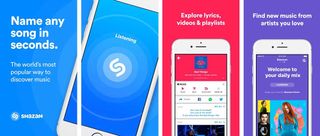
Apple has long had its eye – ’i’, if you will – on Shazam. The Cupertino-based company sought to purchase Shazam outright in 2017 to the tune of $400 million but was caught up in red tape until earlier today, when the acquisition officially went through.
Apple hyped up its experience with the popular music identification app company in a press release, making vague promises about “provid[ing] users even more great ways to discover, experience and enjoy music.” In the same breath, it announced that the Shazam service you know and love will go ad-free in the near future.
If this sounds like old news, you might be confusing it for when Apple originally announced its intent to buy the platform, or when Apple integrated Shazam into Siri, allowing users to ask “Hey Siri, what song is this?” – which, admittedly, was a big deal.
But a partnership is different than the full-out acquisition: clearly Apple has bigger plans for Shazam ... as its $400 million buyout might suggest.
What tangible benefits can a complete Shazam acquisition bring? They're a bit more mysterious.
Without more information from Apple or Shazam to go off of, here are five reasons we think Apple opened up its checkbook for the world’s most well-known audio identification service.

1. It’s not just about music recognition...
Shazam, if you missed out on downloading the app in the last decade since it appeared on the App Store, allows you to record a sample of any audio and ask for it to be identified. This is great for songs that you hear in a store or while traveling that you can’t see the source, but it also has some other purposes like recognizing advertisements on TV.
Get daily insight, inspiration and deals in your inbox
Sign up for breaking news, reviews, opinion, top tech deals, and more.
While the ability for Shazam to figure out which song is playing is neat, we’ll go out on a limb and say it’s actually Shazam’s ability to recognize any audio that Apple is so interested in.
Not only can Apple use Shazam-compatible audio in its own advertisements, but it can also sink its teeth into the advertising dollars of any other company that wants to do the same.
2. Apple Music might develop a memory
One of Shazam’s most useful skills is that it can remember songs you’ve asked it about, keeping them stored in a neat list that you can go back to later.
Yes, iTunes already has a wishlist feature that functions similarly, but once Apple and Shazam become one and the same, that list of songs you've recently heard could integrate with Apple Music, and the service could create entire playlists around songs you’ve asked about.
3. Shazam creates a funnel to Apple Music
As far as we know, Apple has no plans to take down the Shazam app that has 120 million active users and who use the app 20 million times each day.
That wouldn’t make a whole lot of business sense.
What it will do, likely, is use the service to funnel users exclusively to Apple Music. That might scare off some Shazam users who enjoy the egalitarian-ness of the platform, but it could also drum up even more Apple Music users while reducing traffic to the competition.

4. Apple wants to own the music pipeline
Barring Apple purchasing a record label, Apple is closer than it’s ever been to owning the music pipeline. Think about it. You’ll hear a song somewhere that you like. You’ll pull out your iPhone to identify it using Apple-owned Shazam, before opening it in Apple Music.
Heck, you might even use a pair of Beats headphones to listen to the song after you’ve found it on Apple Music – creating an end-to-end experience that’s entirely owned by Apple.
5. The data Apple collects will be immense
The thing about acquisitions is that a company isn’t just buying intellectual property – it’s buying all the data they’ve ever collected, too.
To a company like Apple, that data could be incredibly useful, potentially helping them identify which songs have the least recognition but immense popularity. This data could help Apple decide which music to put in front of your face when you check Apple Music, and it could give Apple the information it needs to help them sell you more music in the future.
Apply this process to all of Shazam’s 120 million active users and you’d have a massive data pool that’s only going to get deeper as Shazam gets deeper integrated into Apple Music.
Nick Pino is Managing Editor, TV and AV for TechRadar's sister site, Tom's Guide. Previously, he was the Senior Editor of Home Entertainment at TechRadar, covering TVs, headphones, speakers, video games, VR and streaming devices. He's also written for GamesRadar+, Official Xbox Magazine, PC Gamer and other outlets over the last decade, and he has a degree in computer science he's not using if anyone wants it.
Most Popular

